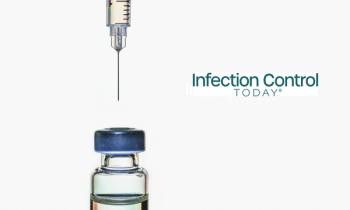
Implementing Point-of-Use Instrument Care to Mitigate Surgical Site Infections in Operating Rooms
How can health care facilities and health providers implement point-of-use (POU) instrument care? Here’s a closer look at the entire process, the principles guiding its implementation, and the potential barriers to implementing point-of-use instrument care.
Surgical site infections (SSIs) remain a major contributor to health care-associated infections (HAIs), accounting for roughly 20% of all HAIs in the US.1 This statistic is concerning, but it comes with a silver lining. Most SSIs are preventable. While the usual emphasis tends to fall on sterilization protocols and perioperative practices, one critical intervention can be done much earlier at the point of use of surgical instruments. These are the simple, immediate steps taken in the operating room (OR) to disrupt bioburden.
How can health care facilities and health providers implement point-of-use (POU) instrument care? Here’s a closer look at the entire process, the principles guiding its implementation, and the potential barriers to implementing point-of-use instrument care.
What is Point-of-Use Instrument Care?
POU instrument care is the immediate precleaning, handling, and treatment of instruments at the site of their use, in this case, the OR. These are the initial steps to ensure there is no build-up of organic matter or dirt on the instruments before they are taken to the central sterile supply department (CSSD).
The steps involved in POU instrument care are2:
- Removing gross debris from the instrument as soon as possible after use and at the end of the surgical case
- Flushing cannulated instruments with sterile water to prevent build-up of debris and clogging of the lumen
- Keeping the instruments moist to help keep the bioburden low
- Disassembling all the instruments correctly, following the manufacturer’s instructions for use (IFU)
- Segregating reusable sharps and properly discarding the disposable sharps
- Transporting the instruments in the appropriate containers
SSIs and Instrument Care
Immediately after an instrument is used in the OR, the next thing to keep in mind should be how to prevent colonization by microorganisms. While reusable medical devices (RMDs) are sent to the sterilization unit, the initial step of decontamination should occur immediately next to the operating table. Once the surgeon hands over the instrument, the scrub technician should clean it as soon as possible. Simply wiping off blood or debris with a sterile gauze goes a long way in preventing SSIs and ensuring the instrument stays in great condition for a long time.
With proper POU instrument care, biofilms are not left to dry. Early removal of any debris or dirt enhances the effectiveness of decontamination and sterilization.
The Benefits of POU Instrument Care
POU instrument care has a host of benefits, reducing the risk of SSIs in the long run and promoting good outcomes of surgical procedures:
- POU instrument care reduces the number of microorganisms on the surface of the instruments and lowers the risk of contamination during the subsequent steps.
- It breaks the cycle of biofilm formation by preventing the drying of the bioburden, thereby making it possible to sterilize the instruments effectively.3,4
- Precleaned instruments are easier to decontaminate.
- It reduces the risk of surgical site infections by promoting proper disinfection and sterilization.
- Point-of-use instrument care keeps instruments in proper working condition by minimizing corrosion and pitting from organic matter, therefore prolonging the lifespan of the instruments.4
How to Implement POU Instrument Care
Health care facilities need to implement guidelines for the care of POU instruments and establish standards of reference. This is a multidisciplinary process that incorporates different cadres, including the people working in the OR, CSSD, transporters, as well as administrators.
How can facilities effectively implement POU instrument care? Here are the critical steps leading to effective POU instrument care.
- Staff Education
Once the staff understand and appreciate the importance of POU instrument care, they are more likely to embrace it. The aim is to elaborate on the benefits of POU instrument care and emphasize that it is a crucial step in fighting SSIs and improving the quality of care. - Availing the Supplies Needed
To maintain effective POU instrument care, certain supplies will be required. For example, the ORs will need to be equipped with the appropriate enzymatic sprays, pre-soak containers, moist towels, and leak-proof bins, among many others that might be lacking. - Formulating Standard Protocols
The availability of clear and precise standard protocols will ensure that steps are followed consistently and that everyone knows their responsibilities. These protocols are customized for the hospital or the OR, taking into consideration the staff available, their numbers, and their skill levels. - Working as a Team
The people working in the OR and those at CSSD need to be on the same page. Everyone should understand their roles as per the standard protocol. The 2 teams should also synchronize the time of collection and transportation of the instruments between the OR and CSSD. - Conducting Audits
To ensure adherence, the facility should establish regular audits and feedback mechanisms from the staff involved in handling the surgical instruments. These will serve as the basis for making any necessary tweaks to the standard protocols and identifying gaps in the process.
The Barriers to Implementing Effective Point-of-Use Instrument Care
In establishing POU instrument care, challenges may be encountered along the way, especially in settings where this has not been standard practice. Here are some of the challenges identified in a study conducted by researchers from the Graduate School of Nursing in Bethesda, Maryland.2
- Complex Procedures and Instruments
The lack of simple and easy-to-follow procedures for the people handling surgical instruments presents a problem. Similarly, having multiple instruments from different manufacturers, each with its own specific instructions for use, is also the case. It is challenging for the staff to retain all the different instructions for use for the hundreds or even thousands of instruments in a surgical unit.
The complexity of the procedures for preparing disinfectant solutions leads to inconsistencies. Different workers may interpret the procedures differently, resulting in varying concentrations and, consequently, differing effectiveness of microbial elimination. - Time Pressure
In settings with high-volume work or understaffing, there is constant pressure to prepare the instruments for the next case. This could make it difficult for the staff to carry out effective POU treatment. While it may not be possible to achieve spotless instruments during the procedure, additional cleaning can be done between cases. - Lack of Knowledge Among Healthcare Workers
The workers handling the instruments may not possess the knowledge and skills required to manage some of the complex or newly procured equipment. This calls for fresh training and creating awareness to ensure everyone is well-informed. - Additional Costs
Getting new supplies, such as enzymatic sprays or foams, can add more costs to the facility. Additional resources must be mobilized to address this. On the bright side, the cost will be reduced in the long run if the hospital succeeds in implementing POU instrument care, thereby reducing the occurrence of SSIs. - Ambiguous Policies
Ambiguous policies make it difficult to execute the plan of POU instrument care because there is no clarity on who is responsible for specific roles, and it is difficult to maintain accountability.
Hospitals can effectively maneuver these barriers by availing the resources needed and ensuring the guiding policies that are clear.
Conclusion
Implementing POU instrument care is a simple yet powerful step towards reducing SSIs, protecting patients, and ensuring good surgical outcomes.
By empowering OR teams to take responsibility for instrument hygiene at the initial stage of processing, health care facilities create a culture of safety, accountability, and excellence. For infection preventionists and surgical teams alike, embracing POU care is not just good practice, it is essential.
References
1. Anderson DJ, Podgorny K, Berríos-Torres SI, et al. Strategies to prevent surgical site infections in acute care hospitals: 2014 update. Infect Control Hosp Epidemiol. 2014;35(6):605-627. doi:10.1086/676022
2. Eberhardt GL, Atwood BI, Smith JD. Point of Use Treatment for Medical Devices: From Bedside to Battlefield. Mil Med. 2024;189(9-10):e1910-e1916. doi:10.1093/milmed/usad499
3. Weber DJ, Rutala WA, Anderson DJ, Sickbert-Bennett EE. Biofilms on medical instruments and surfaces: Do they interfere with instrument reprocessing and surface disinfection. Am J Infect Control. 2023;51(11S):A114-A119. doi:10.1016/j.ajic.2023.04.158
4. Whitacre Martonicz T. Environment and time cause chemical changes in clinical soil on medical devices. Infection Control Today. April 28, 2022. Accessed July 17, 2025. https://www.infectioncontroltoday.com/view/environment-time-cause-chemical-changes-clinical-soil-medical-devices
Newsletter
Stay prepared and protected with Infection Control Today's newsletter, delivering essential updates, best practices, and expert insights for infection preventionists.






